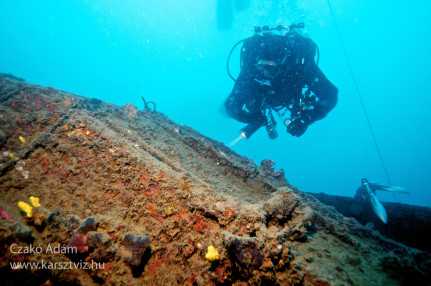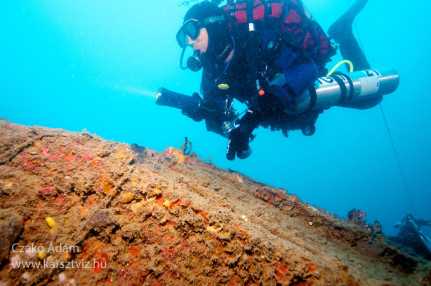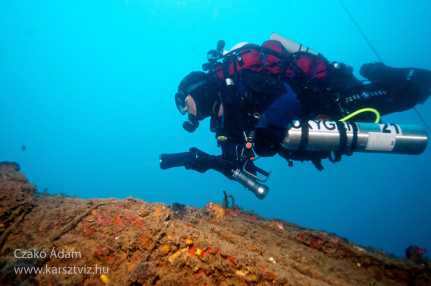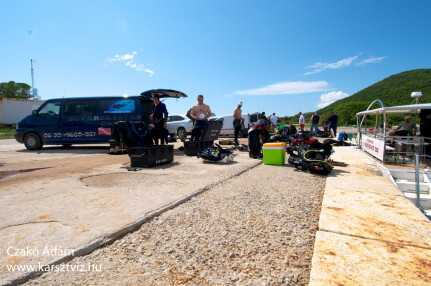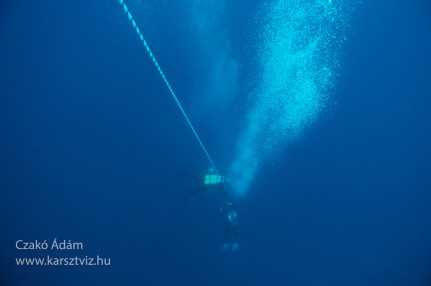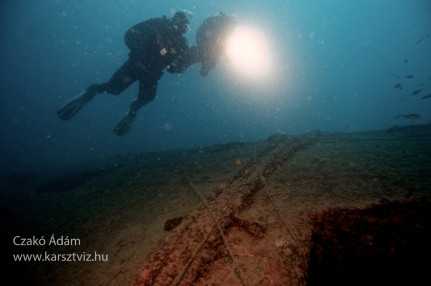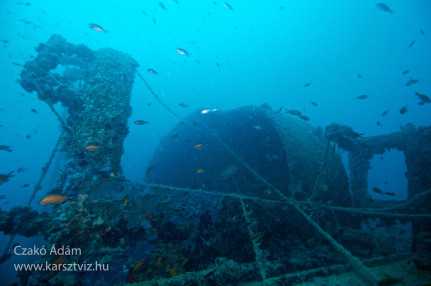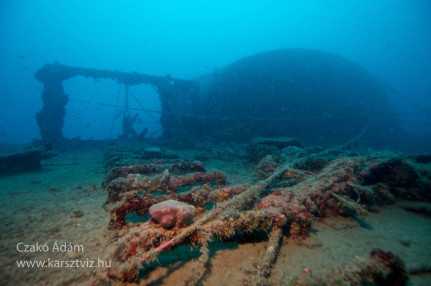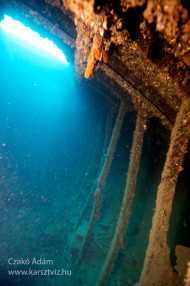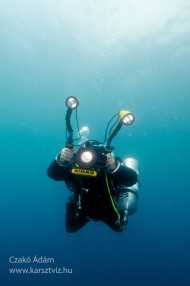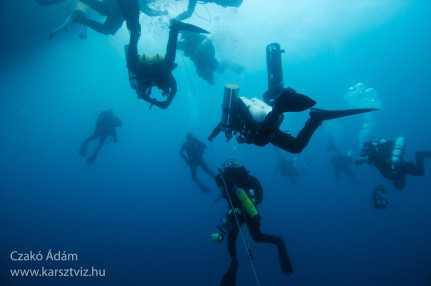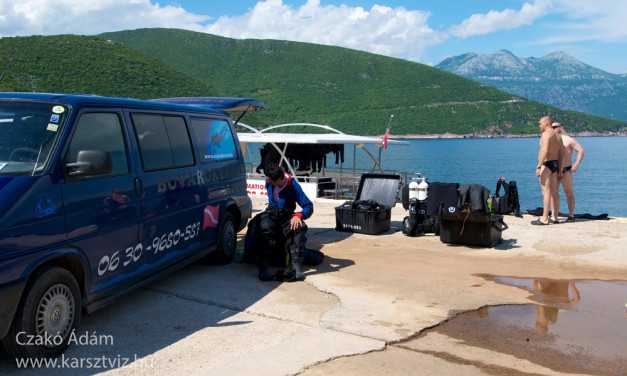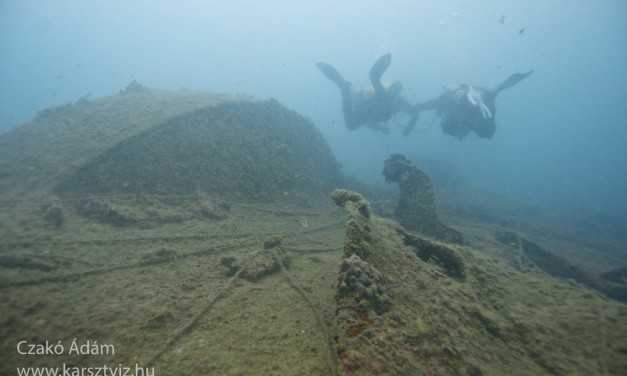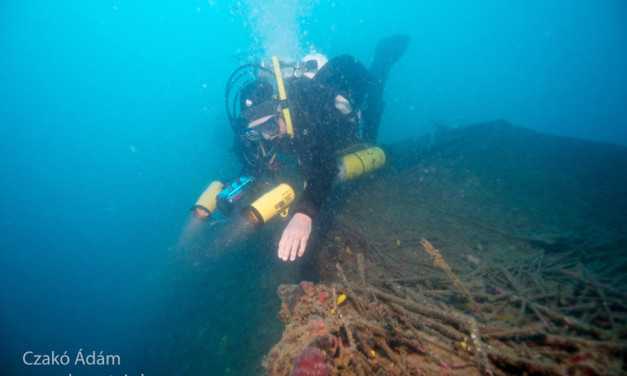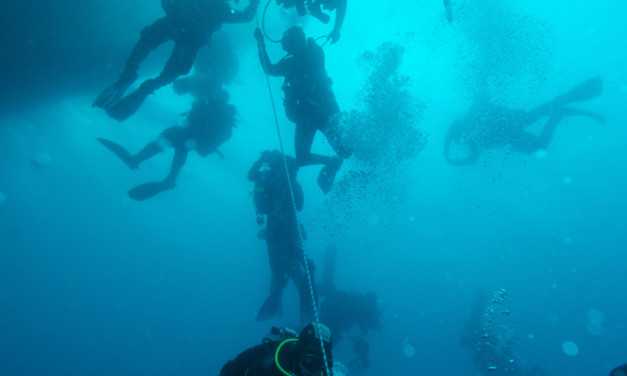Exploring a Shipwreck in the Adriatic Sea
Szöveg: Sándor Galambos | 2012. június 17. 10:18The combat divers of the HDF 5th ‘Bocskai István’ Infantry Brigade 24th ‘Bornemissza Gergely’ Reconnaissance Battalion assisted with the archeological exploration of the battle cruiser ‘Franz Joseph’ that sank more than 90 years ago. The wreck lies at a depth of 45 meters in the Adriatic Sea on the Montenegrin–Croatian border.
Galéria

Christened “S.M.S. Kasier Franz Joseph I’, the ship was launched on May 18, 1889 at 11:30 am. by Princess Maria Josefa, the mother of King Charles IV. After World War I it was allocated to the French, who used it in the bay of Zanjice as a depot for the ammo supplies of 26 commandeered Austro-Hungarian ships. On October 17, 1919 during a heavy bora (sea storm), the seawater flooded the ship, pouring into the interior through the windows that had been left open. The ship capsized and sank with 17 French seamen on guard duty aboard. The wreck lies on its port on the loose and muddy seabed, the propeller is missing from the stern but the brass steering column still stands in the wheelhouse on the first bridge. By Croatian law, the wreck enjoys special protection, so the divers were allowed only to take photos and shoot video footages – removing anything on it was strictly forbidden.

Due to the great depth, they dived once every day. On the first occasion they located and buoyed the ship, and then assessed its status on the next two days. On the fourth occasion they dived to a shallower depth, during which they took photos and shot footages of the wreck “from above", making use of the good visibility. They had to make decompression stops while ascending at the end of each mission, so they “took a rest" for a couple of minutes at nine, six and three meters. The strict Croatian laws notwithstanding, the authorities did not choose to supervise the work – they trusted in the Hungarian divers because the name of László Czakó, the leader of the expedition is a guarantee in scientific circles.
This was the second extra-deep dive for the frogmen of the Hungarian Defence Forces: in October 2008, the EOD divers of the HDF 1st Honvéd EOD and Warship Battalion made a dive of tribute in the Adriatic Sea to the battleship St. Stephen. They put up a memorial plaque on the wreck at a depth of 60 meters.
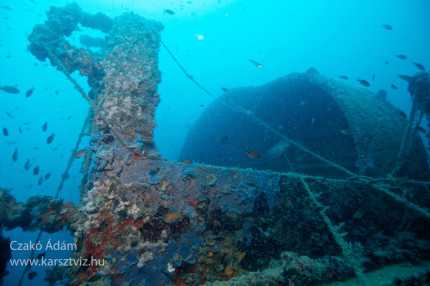
Photo: Ádám Czakó
Click on our gallery for more pictures!

